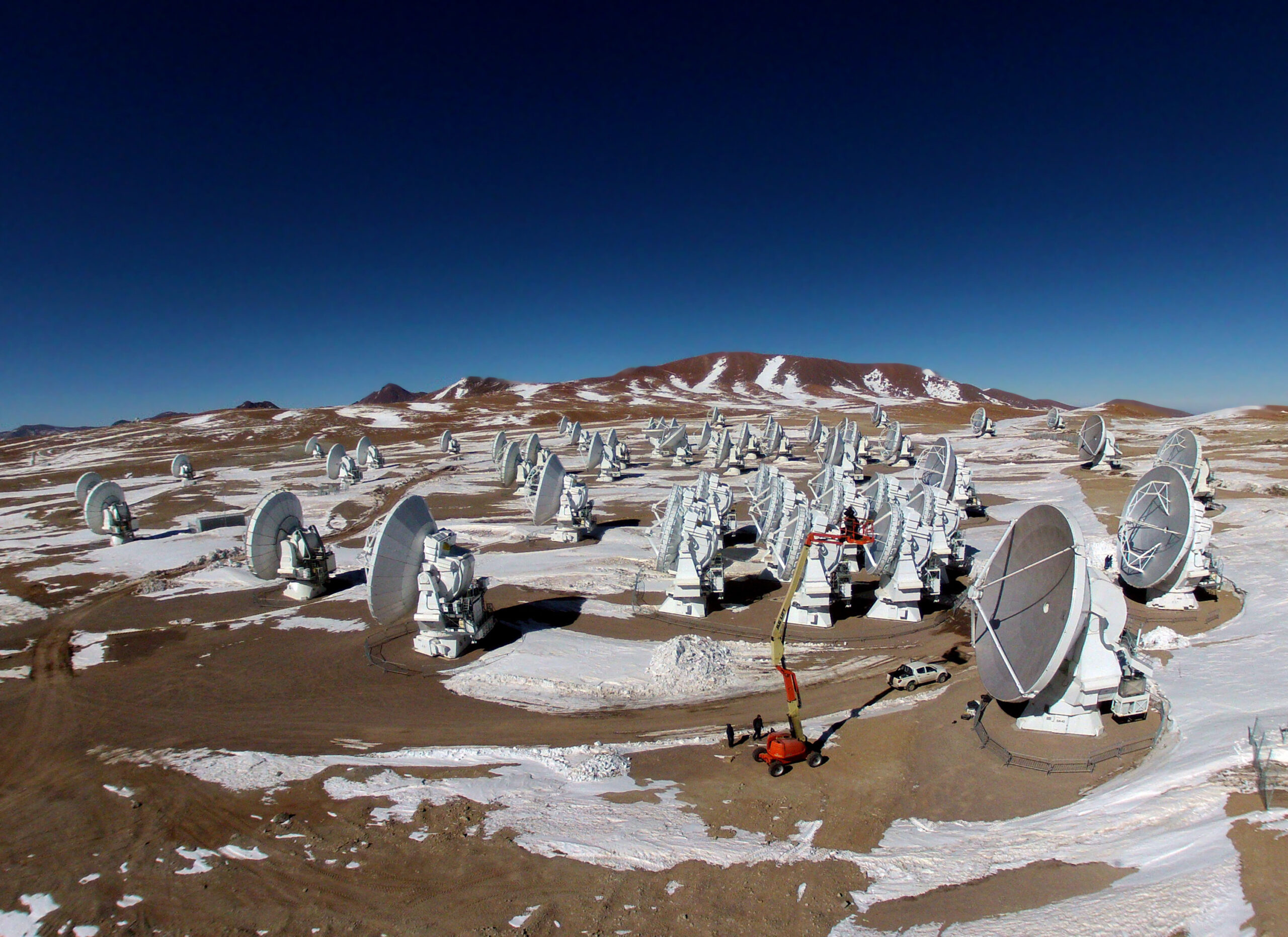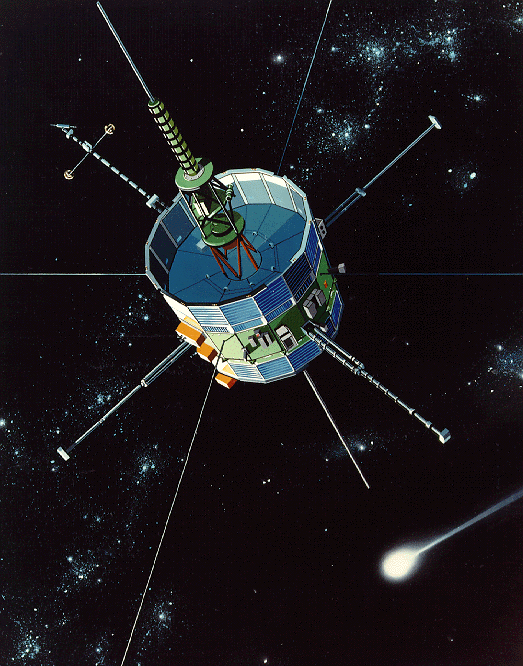
JUNE 7, 2013: A team led by Dutch astronomer Nienke van der Marel announces their discovery of a planet-forming – and comet-forming – disk of material surrounding the young star Oph-IRS 48 in the constellation Ophiuchus, using data obtained with the Atacama Large Millimeter/submillimeter Array (ALMA) telescope in Chile. An ALMA image of this disk is featured in a previous “Special Topics” presentation.
JUNE 7, 2020: The Daytime Arietid meteor shower will be at its peak. This is the strongest of the daytime meteor showers, with a peak rate of 30 to 60 meteors per hour, but since it is a daytime shower primarily detectable via radar, visual observations are very limited. Such observations may nevertheless be possible, although the moon will be full on June 5.
JUNE 8, 1967: Elizabeth Roemer at Catalina Observatory in Arizona photographs a faint suspect for Comet 9P/Tempel 1, which had been lost since 1879. Since this suspect appeared on only a single photograph, it could not be confirmed until the comet was successfully recovered at the subsequent return in 1972. Comet 9P/Tempel 1 was the destination of the Deep Impact mission and subsequently the extended Stardust mission, and is a future “Comet of the Week.”
JUNE 9, 1988: Pluto occults a 12th-magnitude star in Virgo. During the occultation the star disappeared and reappeared gradually, providing the first direct evidence for an atmosphere around Pluto. Pluto is the subject of a future “Special Topics” presentation.
JUNE 9, 2020: The Apollo-type asteroid (144411) 2004 EW9 will pass 0.090 AU from Earth. Prior to this approach the asteroid will be accessible from the southern hemisphere at 15th magnitude, but afterwards will fade rapidly as it travels interior to Earth’s orbit.
JUNE 10, 1982: The International Sun-Earth Explorer 3 (ISEE-3) spacecraft, which had been stationed at the L1 Lagrangian point sunward of Earth since its launch in 1978, is moved away from L1 to begin a series of lunar flybys that would eventually send it (under the name International Cometary Explorer, or ICE) to Comet 21P/Giacobini-Zinner in 1985, the first spacecraft to encounter a comet. ICE is discussed in a future “Special Topics” presentation, and Comet 21P/Giacobini-Zinner is a future “Comet of the Week.”

JUNE 10, 2019: The Zwicky Transient Facility (ZTF) survey program based in California discovers the Atira–type asteroid 2019 LF6. This had the smallest orbit of any asteroid known at that time, with a semi-major axis of 0.56 AU, an orbital period of 151 days, and an aphelion distance of 0.79 AU (slightly beyond Venus’ orbit). However, the Atita-type asteroid 2020 AV2 (discovered early this year), which is the first-known asteroid with an orbit entirely interior to that of Venus, has an identical orbital period. 2020 AV2 is discussed as a special addendum to an earlier “Special Topics” presentation.
JUNE 12, 1861: Comet Tebbutt 1861 II (new style: C/1861 J1) passes through perihelion at a heliocentric distance of 0.822 AU. Later that month it passed close to Earth and briefly became one of the brightest comets of the 19th Century; it is a future “Comet of the Week.”
JUNE 12, 1999: “Comet” C/1999 J6, discovered in images taken with the LASCO coronagraph aboard the SOlar and Heliospheric Observatory (SOHO) but not noticed until a year later, passes just 0.013 AU from Earth, which in theory makes it the closest cometary approach to Earth in history. However, although this object has been detected at two subsequent returns (both times in LASCO images), it has never been detected from the ground, and its true physical nature remains unknown. It (along with a similar SOHO-discovered “comet”) is discussed in a previous “Special Topics” presentation.
JUNE 13, 1968: The Haystack Radio Telescope in Massachusetts successfully detects radar beams bounced back from the near-Earth asteroid (1566) Icarus during that object’s close passage by Earth, and NASA’s Deep Space Network tracking antenna in Goldstone, California does so one day later. These were the first successful radar detections of a solar system “small body.”
JUNE 13, 2006: NASA’s New Horizons mission, which had been launched back in January, flies by the small main-belt asteroid (132524) APL while en route to Jupiter for a gravity assist for its journey to Pluto. The New Horizons mission is discussed in future “Special Topics” presentations.
JUNE 13, 2010: JAXA’s Hayabusa mission returns to Earth following an eventful journey to and from the near-Earth asteroid (25143) Itokawa. Hayabusa successfully collected a handful of soil samples from Itokawa, however upon leaving there contact with Hayabusa was lost for several months before successfully being re-established, which forced a three-year delay in its eventual return. These were the first soil samples from an asteroid to be brought to Earth. Hayabusa and other missions to asteroids are discussed in a future “Special Topics” presentation.
JUNE 13, 2043: The near-Earth asteroid (1566) Icarus will pass 0.059 AU from Earth. This is the next time that this well-known Earth-approaching asteroid will come close to our home planet.
More from Week 24:
Comet of the Week Special Topic Free PDF Download Glossary
Ice and Stone 2020 Home Page


